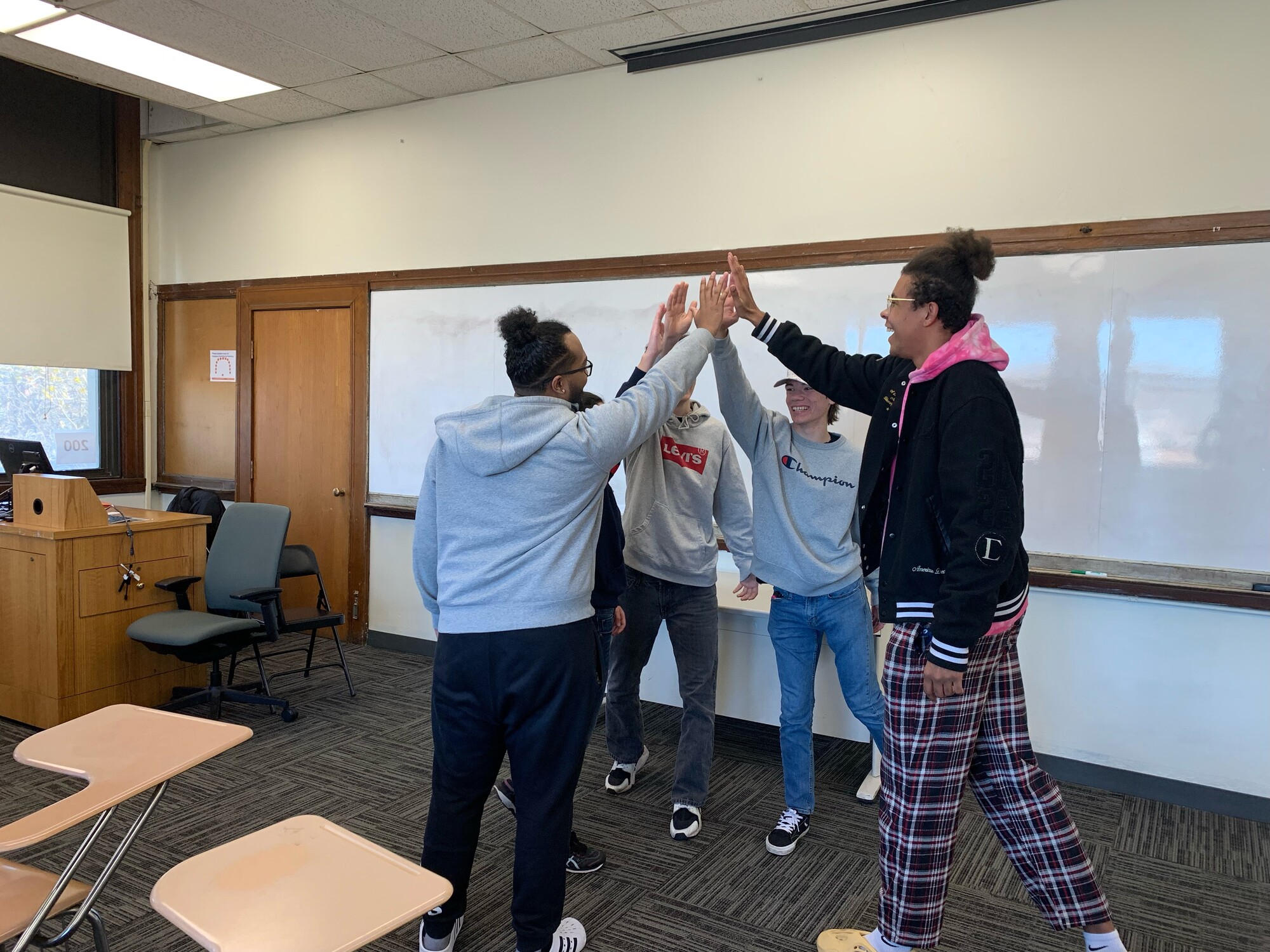“Very little” was the response to the question, “What role do you feel emotions play in teaching acting?” The respondent was a male acting professor teaching at a public university in the Northeast. Through my research on the utilization of emotions in college acting training, I discovered that there are many valid reasons why acting teachers are not talking about emotions in their acting classes. What I have heard over and over again is acting teachers are afraid that if they talk about emotions students will “play” emotions while performing. Most commonly, however, is the fact that both students and faculty do not feel equipped to discuss emotions.
I believe emotions are the lifeblood of acting and a key component in acting training. How we feel drives our choices and behaviors each moment of the day. The time has come to take a deep dive and help acting students recognize, understand, label, express, explore, and shape emotions. We can do this as we support and empower students through their complex emotional landscape—all while making art. Teaching students about emotions the same way other acting techniques are taught will help demystify emotions and give students the tools to shape their emotions in an effective and healthy way.
My Journey to Emotional Intelligence
When I was being trained in method acting as an undergraduate and graduate student, I fully embraced the technique. But looking back, I recognize the harm it caused when I was required to be vulnerable in a harsh, volatile environment. Emotions were magically dangerous and there were times that my emotional hangover lasted for days after a particularly intense class. I was unarmed against a fierce opponent, but I stuck with it because dogmatic instructors presented their way as the only way to be truthful as an actor.
My degree in counseling psychology and my experience advising students in higher education gifted me with access to both the world of emotions and the theory and practice of student development. Working with and counseling college students for several decades has allowed me to stay in touch with generational shifts and discover the value of emotional intelligence (EI) work. This work has become one of the foundations of my teaching philosophy.
As a graduate student at Emerson College, I had the privilege of studying with supportive faculty who fostered my exploration of EI in relation to acting training. During my time as a teaching assistant in a scene study class that utilized Meisner’s repetition exercise, I noticed it was difficult for students to recognize and name their emotions and the emotions of others. I thought to myself, I can help with that, and my idea to integrate EI work into acting training was born.
EI work gives both the faculty and the students the tools to navigate the emotional volatility of an acting class while being mindful of the student's mental health.
Why Emotional Intelligence and Why Now?
EI work is a concrete, accessible way to explore and discuss emotions with acting students. But what is emotional intelligence? Simply put, it is the ability to recognize emotions in oneself and others and to be able to regulate/shape those emotions. Yale’s Center for Emotional Intelligence's RULER system is designed to help students recognize, understand, label, express, and regulate their emotions. For the purposes of integrating EI into college acting training, I adapted this acronym into RULES (recognize, understand, label, express, and shape), which replaces regulating emotions with shaping emotions.
EI training addresses many of the challenges facing college acting programs by pushing back against a long history of method acting training. Method acting makes no effort to define emotions or to discover how they actually function in our bodies and brains. In addition, it does not directly train actors to manage and intentionally shape emotions that are produced as a result of the practice. Even though these techniques were created to produce emotions, these methods are taught without sensitivity to the impact they can have on the actor.
EI work gives both the faculty and the students the tools to navigate the emotional volatility of an acting class while being mindful of the student's mental health. This is especially important because according to a 2018 study, in recent years college students have demonstrated increased levels of emotional dependency, anxiety, and depression. EI gives students an understanding of and access to a full range of emotions. When doing this work with undergraduate students, we did the Meisner Repetition exercise and then used RULES to dig deeper into any emotions that were activated or expressed. One student said in reflection: “I thought I only felt happy or sad.” The EI work we did opened this student up to the complexity and vastness of their emotions.
Emotional Intelligence Curriculum for Acting Students
Before an acting teacher implements EI curriculum into their course, they should first learn more about it. There are scores of accessible articles, books, and videos that can help educators deepen their understanding of EI work and practices. As EI work requires openness, when teaching it’s useful to begin and end with a ritual to provide students with a vehicle to ease into their vulnerability. For example, at the end of the class, teachers should allow enough time for students to decompress after the lesson before facing the rest of the day. Some ways to do this are a simple check-in and check-out process with a question like, “How are you feeling?” or brief meditations at the start and end of each class.
Based on my research and several semesters of application, I’ve outlined a structure for educators to implement EI into the acting classroom. I created these lessons by combining a few different concepts, including applying EI to existing acting exercises and using the foundational premise of drama as education. EI education for acting students can be integrated into existing curriculum, paired with other acting techniques, or be the singular focus of a course. By using the RULES system, students are able to recognize, understand, label, express, and shape their emotions. These exercises serve as a guide, and because of the wealth of theatre games and exercises available, acting teachers should experiment by creating their own lessons exploring emotions.
The following are six+ lessons and a few additional exercises to start an acting class on their journey to EI. Each lesson and/or exercise should be followed by reflection in the form of class discussion, journaling, pair and share, or other creative ways to process the information like writing a poem, creating a drawing, or using improv to perform a scene.
1. Introduction to Emotional Intelligence
Introducing students to the tenets of EI at the beginning of their training is essential. Their first EI lesson should provide a simple definition of EI and its connection to the craft of acting, which paves the way for student investment. Presenting EI as something to be explored and learned similar to voice and movement will solidify students’ connection to the work (“Why do we feel emotions?” is a great foundational video). Then, have students watch the Yale Center for Emotional Intelligence’s video “How We Develop Emotional Intelligence” to set the tone for the second lesson on social identity.
The following lessons are designed to address each step in the EI acting RULES system to help students recognize, understand, label, express, and shape their emotions. Each lesson addresses one or more element in the RULES system.
2. Social Identity: Moving Towards Recognizing Emotions
Social identity work allows students to better know their instrument: themselves. Any work that enables an actor to get to know themselves is valuable and will set the foundation of their self-exploration. I suggest using the University of Michigan’s Social Identity Wheel and accompanying exercises. Emotions should be added to the list of social identities on the wheel to start to bridge the gap between identity and emotions. Doing this will allow students to identify an emotion they feel and express most frequently.
In order to further solidify the connection between identity and emotions, when students complete their identity wheels, have them journal by prompting them to answer the question: What identities have had an impact on my attitude toward emotions and how I express my emotions? Let students know they will be expected to share some of what the wrote. After about fifteen minutes, have student get into pairs and share what they wrote in their journals with their partner and prepare to share with the class. As students share with the class, the teacher can use this as an opportunity to bring up the idea of “emotional privilege by asking students: Is it more socially acceptable for people with certain social identities to publicly express certain emotions?
3. A Day in the Life: Recognizing and Understanding Emotions
Ask students to observe their emotions by recording them in a journal for a day. This is a key step in recognizing and understanding themselves better. Prompt students to notice when they experience emotions and note the details of the situation. It’s helpful to have them include how they are feeling, their behaviors, and why they think they were experiencing that emotion. Make sure to inform students that they will be required to share some of their journal entries and discoveries in class. This is important because when students share with the class, it allows them to describe their emotions from an observer’s point of view rather than experiencing their emotions viscerally.












Comments
The article is just the start of the conversation—we want to know what you think about this subject, too! HowlRound is a space for knowledge-sharing, and we welcome spirited, thoughtful, and on-topic dialogue. Find our full comments policy here
I feel being aware of their emotions definitely helps students. However, I believe if we start over labeling we start over thinking as actors… which steps on our instincts and stifles inspiration. The greatest resource for an actor on stage or set is the other actor. Connect with the other human being. That will stimulate empathy and allow the actor to live in the grays of human emotion. Which much more interesting to watch.
Scott,
Thanks so much for reading my article. I appreciate you taking the time to comment. I received similar feedback as I developed this work. I would ask you to consider this foundational work, similar to script analysis and vocal training. Learn it and then live in the moment. I would never want performers to compromise their instincts and connections. The work is aimed to add depth to an actor's knowledge of an essential instrument. That being said, "if it ain't broke, don't fix it. "
Kind Regards,
Janet